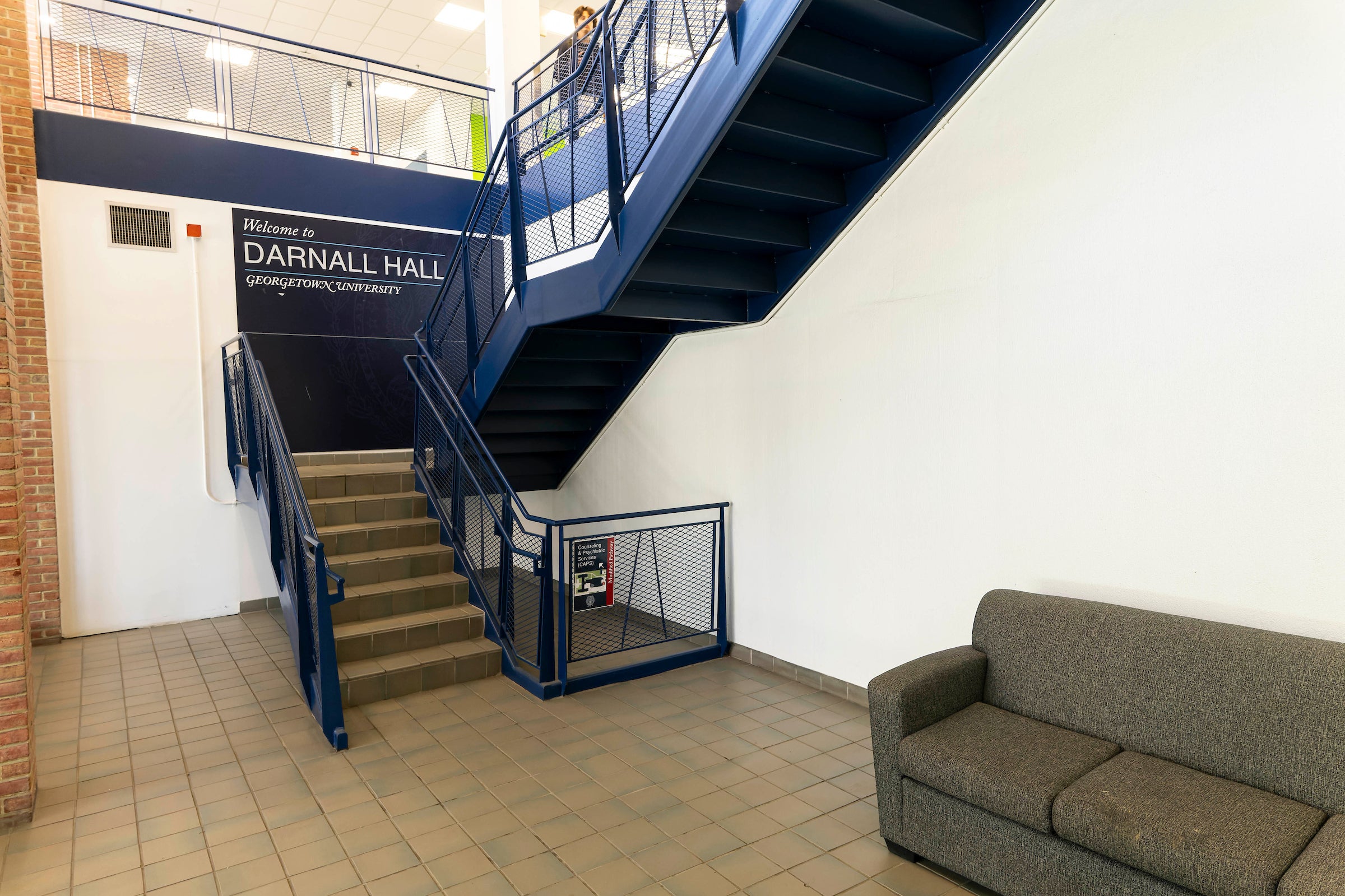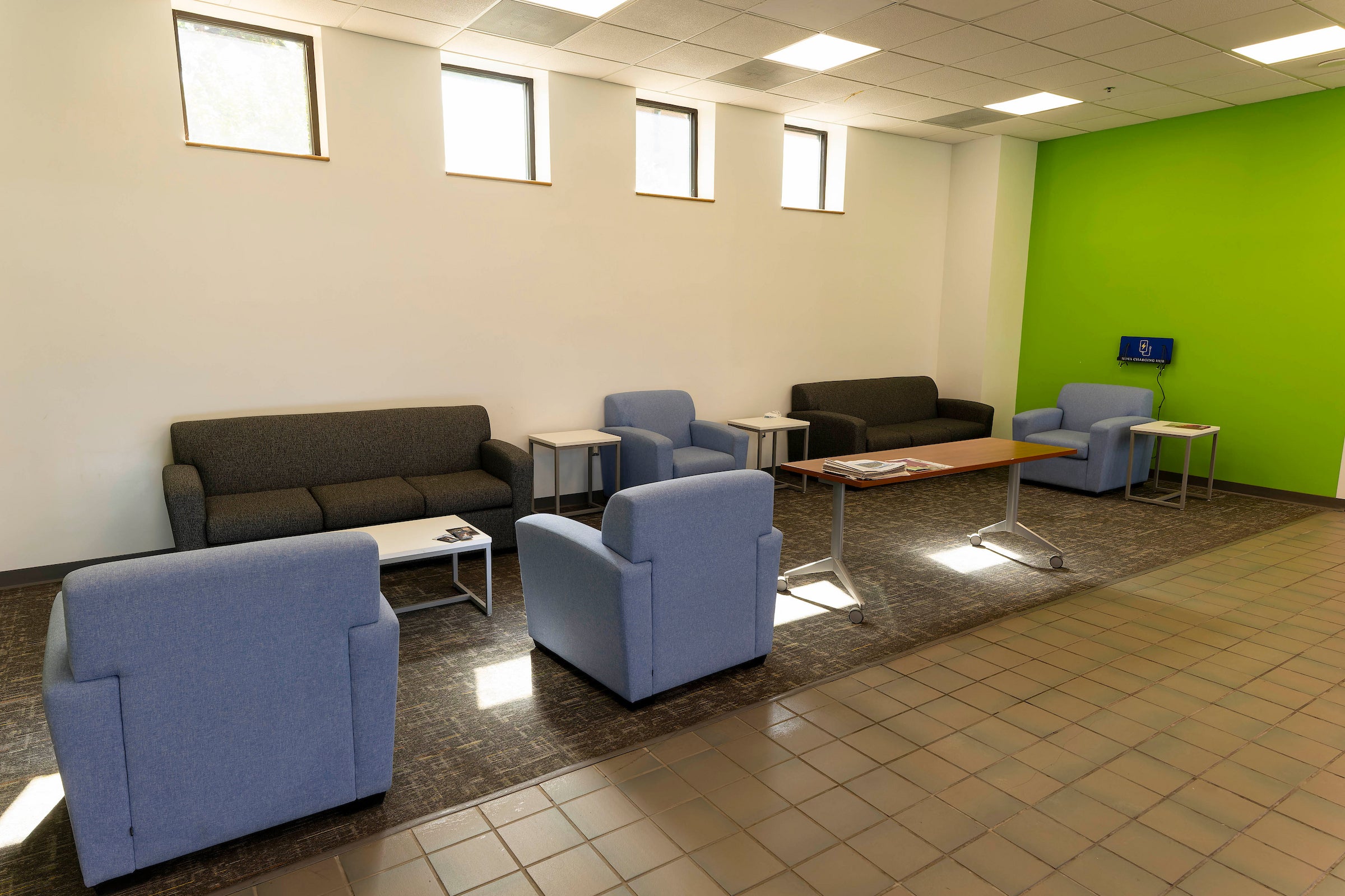End of carousel collection.
Darnall Hall offers first year housing on the north side of campus. With its reputation for being a close-knit community, Darnall gives new Georgetown students an opportunity to make lifelong friends on campus.
Room Features
| Category | Features |
|---|---|
| Building | – Lobby seating & study space renovated 2020 – Vending machines – Print station – Residential Minister – Each floor has a community room with couches, a television, and a kitchen renovated in 2020 |
| Layout | – Double occupancy bedrooms – Two large community bathrooms on each floor |
| Furniture | – Two twin XL beds – Two desks – Two chairs – Two shelves – Two closets with drawers – Window shades – Vinyl plank flooring |
Residents interested in a Fridge-Microwave combo can rent one from Breez. This is the only option for students interested in having a microwave in their on campus housing space, as part of the campus approved MicroFridge combo unit.
Mailing Information
Student’s Full Name
Darnall Hall & Room Number
Georgetown University
3700 O St. NW
Washington, DC 20057
Staffing
Community Director
Jacob Sears
js5710@georgetown.edu
202.784.2771
Darnall M-22
Community Directors are professional live-in staff members employed by the University. These professionals work directly with students, Residential Ministers, Faculty-in-Residence and campus partners to create a formative living learning environment for our students. Community Directors oversee the Resident Assistant staff within their residential community and develop and implement community educational plans.
Resident Assistants
Resident Assistants (RAs) are student leaders who live in our campus communities and help create a safe, welcoming, and supportive environment for all residents. From hosting programs to offering guidance and responding in times of need, RAs play a vital role in shaping the Georgetown residential experience.
Security
Access doors to residential buildings are secured, and students must use their GOCard for building access. Each room has its own door with a lock that residents are encouraged to secure at all times.

